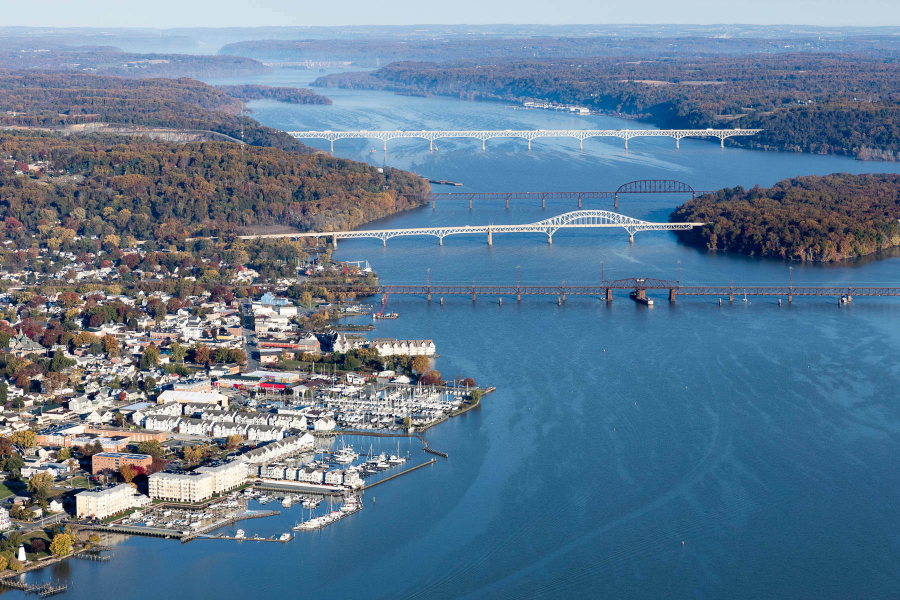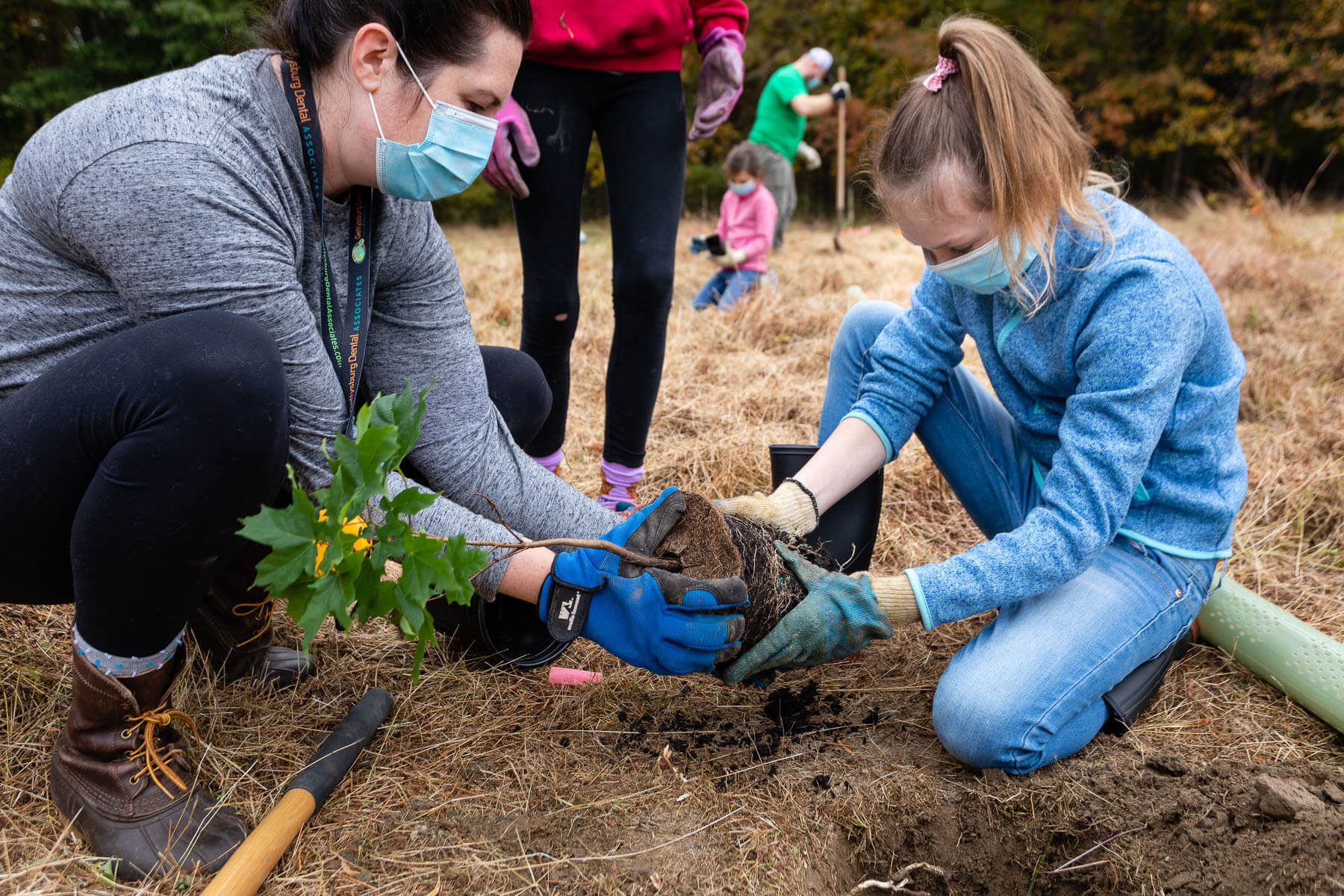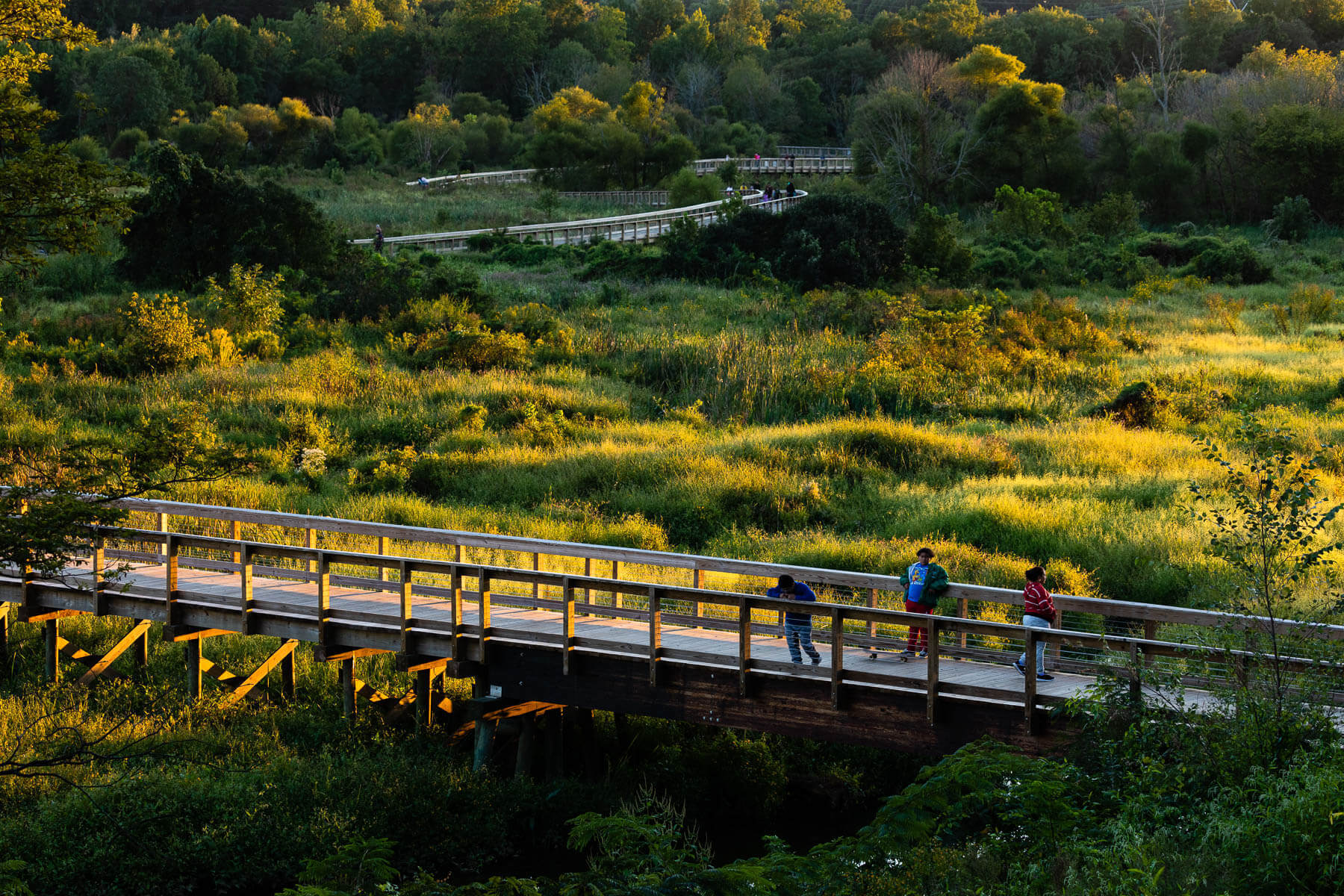How we can reach a healthier, more productive Chesapeake Bay watershed

2025 is fast approaching from the perspective of the Chesapeake Bay. This is the deadline that we at the Chesapeake Bay Program gave ourselves to achieve 31 environmental outcomes that will lead to a healthier, more resilient Chesapeake region.
To refresh, these outcomes are a part of 10 restoration goals outlined in the Chesapeake Bay Watershed Agreement, the document that guides our work. Signed by the seven watershed jurisdictions (Delaware, District of Columbia, Maryland, New York, Pennsylvania, Virginia and West Virginia) whose rivers and streams flow into the Bay, as well as the Environmental Protection Agency (EPA) on behalf of the federal government and the tri-state, legislative Chesapeake Bay Commission, the Watershed Agreement unites the entire region in a single environmental restoration effort.
To prepare for our 2025 deadline, we recently conducted an assessment to see whether we are on track for meeting our outcome targets. Though we update our progress regularly, this was the first time we estimated the likelihood of reaching our outcomes by 2025.

What is our progress?
According to our assessment, two outcomes are completed, 12 outcomes are “on-course” to be achieved by 2025, 11 are “off-course” and 6 are “uncertain.” We identified outcomes as uncertain for a variety of reasons, including when the data need to be updated or are no longer being updated, or when new data needs to be collected to determine a trend.
Our outcomes, like our ecosystem, are all interconnected, which means that if one is behind, others will likely be behind as well. For example, by not restoring enough wetlands or tree canopy (Wetlands outcome and Tree Canopy outcome) the outcomes related to water quality (Water Quality Standards Monitoring and Attainment outcome and 2025 WIP outcome) suffer. If the outcomes related to water quality suffer, it’s difficult to reintroduce oysters and brook trout into the water (Oysters outcome and Brook Trout outcome).
However, the inverse is also true. If we can do a better job with a handful of outcomes, the others will hitch a ride. So, as we look forward to 2025, part of our strategy will be to focus on the outcomes that have the broadest impact on the watershed’s overall health.

Five things to focus on to meet our 2025 goals
Restore our wetlands
The Bay watershed was once covered with thousands of miles of wetlands—the vegetative space between land and water. Because these areas have so many environmental benefits—absorbing excess nutrients, providing habitat for wildlife, sequestering carbon and much more—our outcome created to restore them has a domino effect on so many others, from Fish Habitat to Black Duck to Blue Crab Abundance. To get this outcome back on-course, our federal, state and local government partners need to keep development from occurring on wetlands so that we don’t lose more. At the same time, these government leaders, along with our nonprofit partners, should continue creating and re-establishing wetlands that have been lost, while enhancing the functions of existing wetlands through proper management.
Protect land where it’s needed most
A large part of keeping our rivers and streams clean is having enough undeveloped land surrounding them. Lands kept in their natural state provide the best protection for clean water: they can absorb excess rainfall, keep water temperatures cool, reduce flooding and prevent land from eroding. They also offer habitat for wildlife and places to recreate and cool-off for community members. The Bay Program’s Protected Lands outcome seeks to permanently protect a total of 9.8 million acres of land from development (two million more than what had been protected by 2010). Thanks to our federal, state and local governments, as well as land conservation groups, this outcome is on-course, and we are now working to exceed the original target, instead reaching to protect 30% of the watershed by 2030 (approximately 2.4 million more than the original 9.8 million acre target). Continuing this work will not only protect steam health, but help us meet outcomes related to brook trout, public access and climate adaptation.
Plant trees where they’ve been lost
Though we’ve permanently protected a substantial amount of land, we are still losing trees faster than we are gaining them. And as a result, our Tree Canopy and Forest Buffers outcomes are off-course. To counter this loss, Bay Program partners work with landowners like farmers, schools, religious groups and neighborhoods to plant protective trees. Community members can support this work by welcoming trees on their property, making sure they don’t get cut down and administering proper maintenance. Municipalities can also help by keeping forests from being developed in the first place. By getting these outcomes on-course, we will fuel outcomes related to fish habitat, stream health, water quality and even oysters and blue crabs. Shading from trees also decreases the summer temperatures of our air and streams, helping fish and people combat rising temperatures due to climate change.
Rebuild our oyster populations
The Bay Program has currently restored oyster habitats in 5 of 10 tributaries, which means we are on-course to achieving this outcome by 2025. Continuing support for this outcome and related work will result in numerous environmental benefits. Oysters are not only a major commercial seafood, but they also clean the water and help keep shorelines from eroding. The oyster reefs created through this outcome also provide habitat for fish and their forage. By focusing on the Oysters outcome, we’ll be supporting other major outcomes such as submerged aquatic vegetation (SAV), fish habitat and ones related to water quality improvement.
Support our farmers
Over the years, we have developed aggressive, jurisdictional-based plans for reducing nitrogen, phosphorus and sediment pollution known as Watershed Implementation Plans (WIPs). Each jurisdiction has a WIP, and while some are doing better than others, the region collectively is off course. Having made significant progress reducing pollution from sources such as wastewater treatment plants, the next largest source of nutrient pollution is now agriculture. Farmers are growing more food than ever before, which means that more nutrients are flowing off their land and ending up in the water. To help, we can plant trees, build manure pits, provide cover crops and implement other best management practices (BMPs). But the challenge is that these new practices take time, money and landowner buy-in. Though the 2025 WIP outcome is behind, our partners are working with farmers across the region to help finance and install these BMPs so that the agricultural sector can become more sustainable.
What happens after 2025?
It’s important to note that whether or not we meet our outcomes by 2025, the work will continue. The Chesapeake Bay Program is continuously gaining knowledge and becoming more effective in its work. We are learning to be more inclusive of all our communities within the watershed and taking on unprecedented challenges associated with climate change. New technology is aiding various restoration efforts and significant cultural changes are taking hold, such as homeowners taking it upon themselves to reduce stormwater runoff, farmers choosing to adopt pollution-reduction technologies and waterfront communities leaving their shorelines wild. Most importantly we will remain a partnership, helping communities across the region protect their local waterways.
Full list of outcome attainability
Completed (2 total): 2017 Watershed Implementation Plans, Blue Crab Management.
On-course (12 total): Blue Crab Abundance, Oyster Restoration, Fish Passage, Protected Lands, Public Access Site Development, Fish habitat, Forage Fish, Toxic Contaminants Research, Land Use Options Evaluation, Land Use Methods and Metrics, Sustainable Schools, Environmental Literacy Planning.
Off-course (11 total): Brook Trout, Forest Buffers, SAV, Tree Canopy, Wetlands, Black Duck, 2025 WIP, Diversity, Water Quality Standards Attainments and Monitoring, Toxic Contaminants Policy and Prevention, Climate Adaptation.
Uncertain (6 total): Stream health, healthy watersheds, Local Leadership, Citizen Stewardship student MWEEs, Climate Monitoring and Assessment.

Comments
It is good to see an honest evaluation of successes and failures of the EPA Bay Program. Going forward, I think that the hardest issues to address will be urban and agricultural non-point sources of N, P, and particulates. I'd like to see new ideas and approaches to address these coming from the Bay Program.
I'm going to suggest two possible approaches to consider, in addition to current efforts. For urban areas, ban the use of inorganic lawn fertilizers and encourage fertilizer suppliers to provide only composted waste (urban and agricultural) in appropriate amounts for those enjoying green and fast-growing lawns requiring frequent mowing. Likewise, for agricultural areas, subsidized cover crops and stream buffers, among other BMPs, could be required for grain production. In addition, animal waste streams could be used to generate natural gas and fertilizer with local or regional digester facilities for which farmers would be paid to contribute their waste streams. The solutions are out there - they just need to be explored, tested, and encouraged or enforced.
Thank you!
Your comment has been received. Before it can be published, the comment will be reviewed by our team to ensure it adheres with our rules of engagement.
Back to recent stories